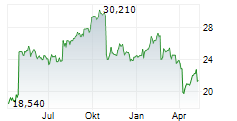
December 1, 2024
- Philips CT 5300 combines innovative hardware, software, and artificial intelligence to make high-quality screening, diagnostic, and interventional imaging accessible to more patients, including reading support with Automated AI-enabled Philips Advanced Visualization Workspace applications
- Philips collaborates with Annalise.ai to evaluate streamlining workflows to prioritize time-sensitive cases
Amsterdam, the Netherlands and Chicago, USA -Royal Philips, which improves the accuracy of vertical positioning relative to manual positioning by up to 50% during scan preparation, increases user-to-user consistency by up to 70%, and reduces positioning time by up to 23% [1]. Also included is Precise Cardiac, which compensates for cardiac motion to improve visualization of the coronary arteries during CT imaging, even in patients with a rapid heartbeat, and Precise Brain, which automatically reformats scans to help improve visualization for fast confident diagnosis of the respective anatomies. In addition, Precise Imagedelivers fast, high-quality image reconstruction with an 80% lower radiation dose, 85% lower noise, and 60% improved low-contrast detectability [2], making the CT 5300 ideal for sites developing cardiac programs and ultra-low dose screening.
CT 5300 is seamlessly integrated with Advanced Visualization Workspace, Philips' comprehensive, scalable AI-enabled image post-processing platform [3,4]. This platform is designed to streamline radiology workflows to help deliver high-quality care, enhance diagnostic confidence, and speed image reading and reporting. The unique clinical depth and deployment capabilities of Advanced Visualization Workspace allow it to scale to meet changing clinical needs and future expansion.
Collaboration with Annalise.ai for triage evaluation in emergency departments
Philips also announced a pilot with medical imaging AI solutions company Annalise.aito investigate the feasibility of Annalise Critical Care AI - a comprehensive critical case triage support solution - to enhance triage support and optimize workflows for conditions like traumatic brain injuryfor more information.
[1] Based on an internal Philips assessment conducted by five clinical experts, comparing manual positioning versus Precise Position in 40 clinical cases using a human body phantom.
[2] In clinical practice, the use of Precise Image may reduce CT patient dose depending on the clinical task, patient size, and anatomical location. A consultation with a radiologist and a physicist should be made to determine the appropriate dose to obtain diagnostic image quality for the particular clinical task. Dose reduction assessments were performed using reference body protocols with 1.0 mm slices at the "Smoother" setting of Precise Image, and tested on the MITA CT IQ Phantom
For further information, please contact:
Kathy O'Reilly
Philips Global Press Office
Tel.: +1 978-221-8919
E-mail : kathy.oreilly@philips.com
About Royal Philips
Royal Philips.
Attachments
- Philips CT 5300 with AI-enabled workflow (https://ml-eu.globenewswire.com/Resource/Download/3266028c-6680-4267-883f-0528187fb25c)
- Clinical image of the heart with Precise Cardiac on Philips CT 5300 (https://ml-eu.globenewswire.com/Resource/Download/3be0426e-3cf2-4806-9b96-2b56e0f16384)





